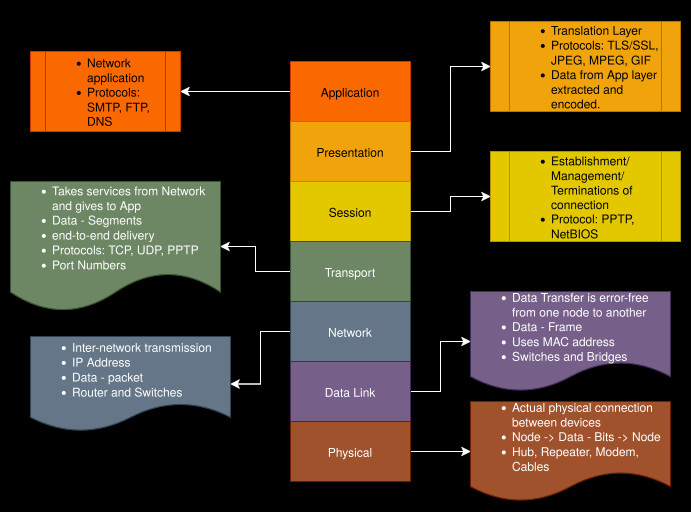
The OSI (Open Systems Interconnection) Model defines how data moves through a network, from one device to another. It has seven layers, each with specific functions. Let’s explore the key layers covered in this post.
Physical Layer (Layer 1)
The Physical Layer is the foundation of the OSI Model. It deals with the physical connection between devices.
Functions
- Converts data to signals and back (encoding/decoding).
- Handles modulation and demodulation.
- Manages transmission modes: simplex, half-duplex, full-duplex.
- Determines speed (bitrate) of data transfer.
Common Protocols
- Ethernet (IEEE 802.3): Standard for wired networks.
- Wi-Fi (IEEE 802.11): Wireless networking.
- Bluetooth (IEEE 802.15.1): Short-range wireless.
- USB: Connects devices over short distances.
Device Arrangement (Topology)
- Devices can be arranged in star, bus, ring, or mesh topologies.
- (Tip: Add diagrams to visualize these topologies.)
Limitations
- Only transmits raw bits; no interpretation.
- Vulnerable to physical damage (e.g., broken cables).
Data-Link Layer (Layer 2)
The Data-Link Layer ensures reliable data transfer between two directly connected nodes.
Functions
- Framing: Adds headers/trailers to mark data boundaries.
- Error Detection: Uses parity checks, checksums, CRC.
- Error Correction: Retransmits lost or corrupted frames.
- Flow Control: Prevents sender from overwhelming receiver.
- Addressing: Uses MAC addresses for device identification.
Common Protocols
- SDLC (Synchronous Data Link Control)
- HDLC (High-Level Data Link Control)
- SLIP (Serial Line Internet Protocol)
- PPP (Point-to-Point Protocol)
- LAP (Link Access Procedure)
- LCP (Link Control Protocol)
- NCP (Network Control Protocol)
Limitations
- No encryption or authentication.
- Only manages device-to-device communication.
- Can suffer from congestion and collisions.
Presentation Layer (Layer 6)
The Presentation Layer formats and secures data for the application layer.
Functions
- Translation: Converts data formats (e.g., ASCII to EBCDIC).
- Encryption/Decryption: Secures data using protocols like SSL or TLS.
Stay tuned for more posts covering the other layers of the OSI Model!